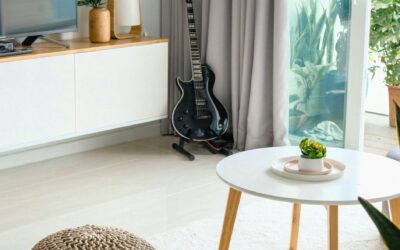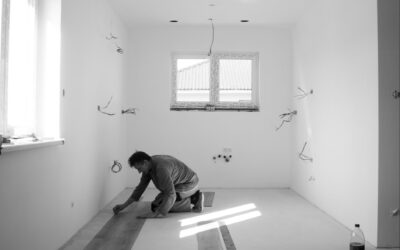Luxury Vinyl Tile flooring is booming in popularity due to its ease of installation, durability, and excellent range of designs, colours, and styles. I find, however, that there is a lot of confusion and uncertainty regarding laying LVT flooring and what it can be installed over.
One of the most common questions is, can you lay LVT on floorboards, and this is what I aim to explain below. By reading on, you will learn if this is viable, the considerations that should be made, and what is needed for a successful installation.
Laying LVT on Floorboards
First, let’s look at the process itself and whether it is even feasible. The great news is that you can lay LVT on floorboards. However, there are a range of considerations and steps that affect the viability of this process.
Addressing the Feasibility
As discussed, you can lay LVT on floorboards. This includes directly onto floorboards, or onto a subfloor installed over the floorboards. Both are viable options and will give a fantastic, stable finish to your tiles.
Check out our Amtico LVT flooring options.
Factors to Consider
While the process is possible, there are several important factors to consider including:
- Quality of the floorboards.
- Evenness of the floorboards.
- Subfloor or no subfloor.
- Potential for moisture and dampness.
- LVT flooring type.
The quality and evenness of your floorboards are imperative and this is something you should inspect carefully. If your floorboards are old, warped, and uneven, a subfloor and some evening measures are required whereas if they are relatively new and in great condition, you can get away without a subfloor.
You must also consider the location of the room and the possibility of dampness and moisture as this can affect things like adhesive, and cause your LVT flooring to degrade if it is not water-resistant.
Lastly, be aware of the different LVT flooring types such as glue-down LVT, click LVT, and rigid core LVT. There are slight differences in durability, and the installation process, for example.
Potential Benefits and Drawbacks
The benefit of laying on top of floorboards is that the installation process is incredibly quick. If you are using something like click LVT that doesn’t require adhesive and no subfloor is needed, you won’t believe how quickly you can get your floor finished.
On the flip side, if it transpires that your floorboards are uneven or in disrepair, the cost and time can increase to bring them up to standard and make a suitable subfloor to lay LVT flooring on.
Preparing Floorboards for LVT Installation
It’s not a simple case of laying your LVT flooring, locking it together, and job done. You must prepare the tiles, make sure the subfloor is up to standard, and consider the presence of moisture or the potential for dampness.
Inspection and Repair
If your floorboards are in good condition and you feel that the LVT flooring can be laid directly onto it, it’s still wise to inspect and repair the individual boards.
The first step is to check the quality and look for any potential snags or uneven parts like stay nails and screws, chipped floorboards, and cracks. Basically, anything that could cause the LVT flooring to be uneven.
You can then remove any nails, and sand any rough or jagged parts that are sticking up. Now is the time to consider replacing any broken or worn floorboards before installing your LVT flooring too.
Subfloor and Preparation
While LVT flooring can be laid straight onto floorboards, it is often advised to install a subfloor regardless. A simple plywood subfloor of around 1.9cm should suffice and this has many advantages.
Firstly, it helps remove any unevenness in the floorboards and gives maximum stability to your LVT. It also means that the installation process will be much smoother and you should get a better end result.
Moisture Considerations
Moisture can completely derail a flooring installation and it’s important to assess the moisture levels in the room or the possibility of dampness. This is because excess moisture is known to cause the adhesive that joins the LVT flooring to the subfloor to fail.
As a result, the tiles could end up moving and you get an uneven floor. If you know that the room does have a higher moisture content, click LVT flooring is the better option as this doesn’t require any adhesive. Instead, it simply lays on the subfloor with the individual tiles locking together.
Yes, LVT Flooring Can be Laid Over Floorboards
So, can you lay LVT on floorboards? Certainly! You just need to make sure the floorboards are level, that the tiles have been acclimatised properly to the room conditions, and that a subfloor is installed if necessary.
If you are unsure of anything, please don’t hesitate to contact us as we can provide expert advice tailored to your individual circumstance and make sure you get the right type of LVT flooring for your home.









